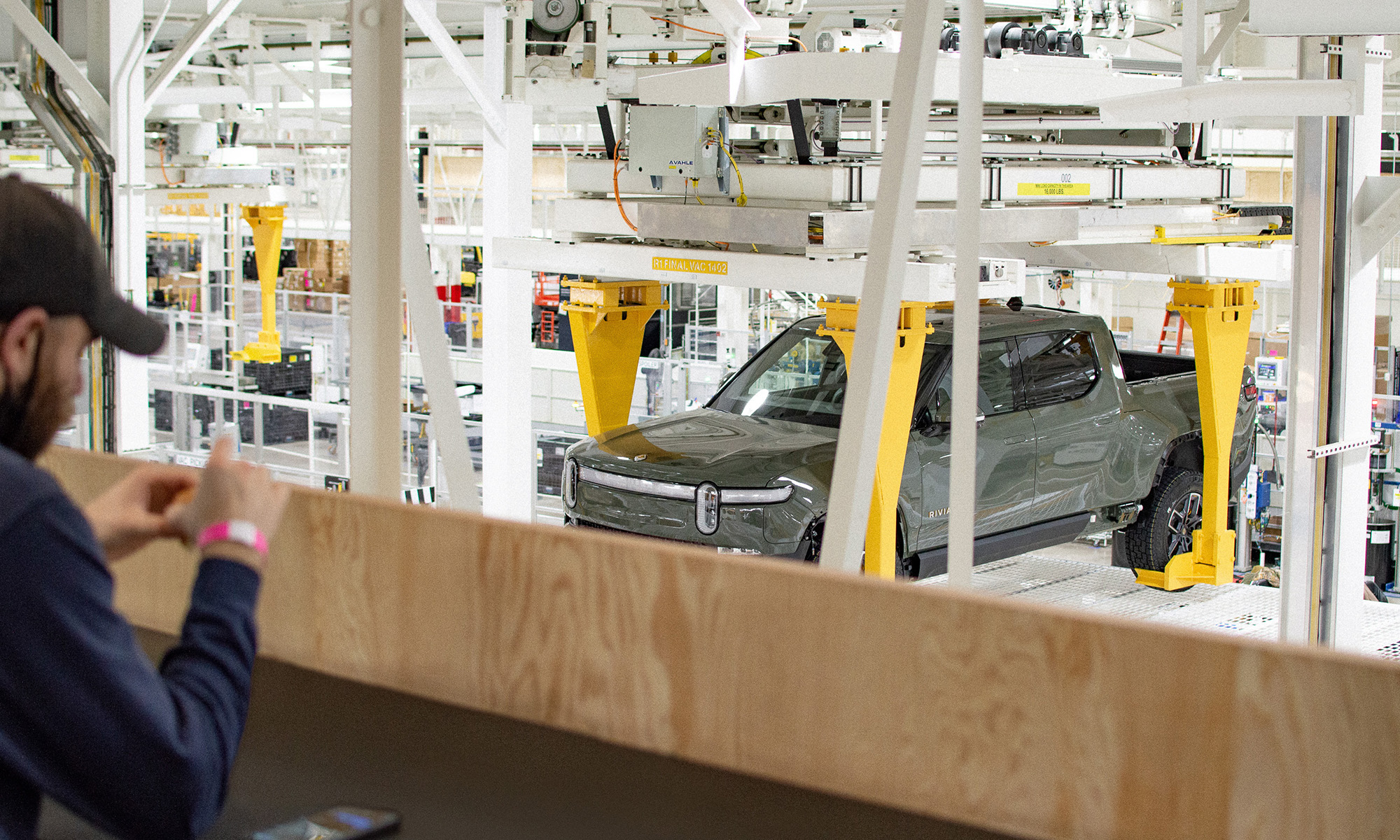Tesla (TSLA 1.93%) made a decision when it built its business to start with high-end vehicles. And then it charted a path toward more moderately priced vehicles. That business move worked and now the company is sustainably profitable despite years of red ink at the get-go.
Rivian Automotive (RIVN +0.10%) is currently in the red ink stage of its development, but it has Tesla-like ambitions and a key turning point could be fast approaching.
What did Tesla do?
The first Tesla was a fancy, high-end sports car. That vehicle proved to the world that electric vehicles (EVs) were a real product that customers would want to buy. For a long time the large automakers shunned EVs as not being viable. After Tesla proved the concept, it brought out sedans that would appeal to more than just car enthusiasts.

Image source: Rivian.
Those higher-end EVs sold well and, suddenly, every major automaker realized that they had to make EVs. If they didn't jump on the bandwagon, they could get boxed out of a new segment of the auto market. As that was going on, Tesla pivoted again, bringing out lower-cost models of its EVs that had mass-market appeal. That helped to boost sales volumes in the capital-intensive business and improve profitability.
Essentially, Tesla started with rich customers. But there are only so many rich customers. And, thus, it moved down market to build a sustainably profitable business. That's a simplification of a very long process, of course, but it is the general theme that's important. Rivian is following the Tesla playbook.

NASDAQ: TSLA
Key Data Points
Start high-end, then go mass-market
Rivian currently makes two kinds of trucks, a delivery vehicle and a high-end consumer pickup truck. The delivery vehicle was an important proof of concept that helped the company develop its technology. It also allowed Rivian to generate some early revenue thanks to a relationship with Amazon. Consider the delivery truck similar to Tesla's sports car.
As it was proving that its technology was reliable, Rivian was also building fancy high-end pickups for the consumer market. The trucks have been well-received, and Rivian has been able to ramp up production and fine-tune its production processes along the way. In fact, it was able to turn a modest gross profit in the fourth quarter of 2024 and in the first quarter of 2025.
This means that Rivian stopped losing money on every truck it sold, though costs further down the earnings statement, like research and development (R&D) and selling, general, and administrative expenses (SG&A), still leave it bleeding red ink.

NASDAQ: RIVN
Key Data Points
This is where scale becomes important. Rivian needs to spread its costs over more vehicle sales, which is basically what Tesla did. The next big vehicle release for Rivian is the R2, which is a lower-cost truck meant for the mass market. The goal is to start production in the first half of 2026. With around $7 billion of cash on the balance sheet and a key partnership with auto giant Volkswagen, it seems highly probable that Rivian gets that factory up and running.
The real test of Rivian's business will come when it starts selling the R2. If sales are robust, the company will have successfully taken Tesla's playbook and achieved similar wins. And the added volume from R2 sales should help move Rivian toward sustainable profitability, just like Tesla achieved.
Rivian is high-risk, but executing well
Rivian remains a high-risk investment that's only appropriate for more aggressive investors. If the company doesn't execute well, it could still fall short of its goals in what is a very complex and competitive auto sector. However, the launch of the R2 could be the big turning point for Rivian that turns it into the "next Tesla."
OK, no company is ever going to be Tesla, given that the company effectively created the EV space. But Rivian's R2 could make it the next best thing.





